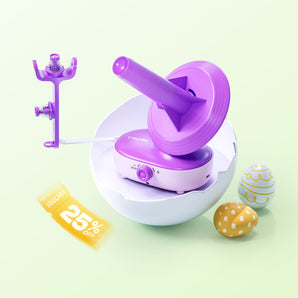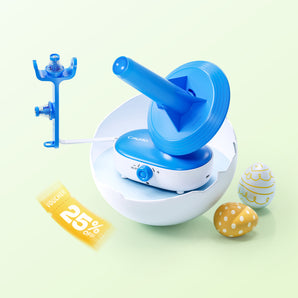Screen printing on shirts is one of the most popular, versatile, and time-tested methods for customizing apparel.
Whether you’re a business owner seeking branded uniforms, an event organizer planning for team t-shirts, or a designer launching your own clothing line, understanding the ins and outs of screen printing can help you make informed decisions for your custom shirt projects.
In this comprehensive guide, we’ll break down everything you need to know about screen printing on shirts - from how the process works, to the benefits and limitations, to choosing the right materials and inks, and best practices for designing and caring for your shirts.
By the end, you’ll have a clear understanding of whether screen printing is the right choice for your needs, and how to get the best possible results.
Step-by-Step Guide Process of Screen Printing on Shirts
Screen printing is a multi-stage process that combines artistry, craftsmanship, and technology. Here’s how it works specifically for shirts:
1. Artwork Preparation
- Design File: Start with a high-resolution, preferably vector-based design (such as AI, EPS, or PDF). This ensures sharp, clean prints.
- Color Separation: Each color in your design requires its own screen. The artwork is separated by color, and each layer is prepared for printing.
2. Screen Creation
- Stencil Making: A mesh screen is coated with a light-sensitive emulsion. Your color-separated artwork is transferred onto the screen using exposure to light, creating a stencil for each color.
- Screen Setup: Each screen is mounted onto the printing press, aligned to ensure precise registration (especially important for multi-color designs).
3. Shirt Preparation
- Garment Placement: Shirts are loaded onto a platen (board) to hold them flat and steady.
- Pretreatment (for dark shirts): Some dark fabrics may require a pre-treatment or a white underbase to ensure colors appear vibrant and opaque.
4. Ink Application
- Inking: Ink is poured onto the screen.
- Printing: A squeegee is used to push the ink through the open areas of the stencil, transferring the design onto the shirt.
5. Curing
- Heat Setting: The printed shirt is run through a conveyor dryer, heat press or UV light to cure the ink, making the design permanent and wash-resistant.
6. Multi-Color Printing (Optional)
- Registration: For designs with multiple colors, each screen is carefully aligned so that all colors line up perfectly on the shirt.
Why Choose Screen Printing for Your Shirts? (Benefits)
Screen printing remains a top choice for custom shirts due to several key advantages:
Durability and Longevity
Screen-printed designs are known for their exceptional durability. When properly cured, the ink bonds with the fabric, resulting in prints that resist fading, cracking, and peeling—even after many washes.
Vibrant Colors
Screen printing allows for bold, opaque, and highly saturated colors, especially when using plastisol inks. This is particularly effective on dark fabrics, where digital methods may struggle.
Cost-Effective for Bulk Orders
Screen printing involves upfront setup for screens and equipment, but once set up, printing additional shirts is fast and economical. The more shirts you print, the lower the cost per shirt.
Versatility in Ink Types
A wide range of ink options are available, each offering different effects and tactile qualities. This includes plastisol, water-based, discharge, metallic, puff, and more.
Suitable for Various Shirt Materials
Screen printing works well on cotton t-shirts, polyester athletic shirts, and blended fabrics, with some considerations for each (see below).
Ready to start your screen printing journey? Explore Caydo's high-quality screen printing kits and bring your custom designs to life with ease and precision.
Things to Consider Before Screen Printing on Shirts (Limitations & Factors)
While screen printing is versatile, it’s not always the best fit for every project. Here’s what to keep in mind:
Design Complexity
Highly detailed, photographic, or full-color gradient designs (like photos) are challenging for screen printing. Digital methods like Direct-to-Garment (DTG) may be better for these cases.
Number of Colors
Each color requires a separate screen and setup, increasing cost and complexity. Designs with fewer colors are more economical.
Order Quantity
Screen printing is most cost-effective for larger orders (typically 12 shirts or more), due to the setup time involved.
Shirt Material
Certain inks perform better on specific fabrics. For example, water-based inks work best on cotton, while polyester may require specialized inks to prevent dye migration.
Feel of the Print
Some prints, especially with plastisol ink, may feel thicker or less breathable, particularly on large solid areas.
Choosing the Right Shirts for Screen Printing
Selecting the right shirt is crucial for a successful print. Here’s how different shirt types perform:
Cotton
- Best for: Most screen printing projects.
- Why: Cotton t-shirts absorb ink well, resulting in vibrant, durable prints.
- Considerations: Works with all ink types, including water-based and discharge inks.
Polyester
- Best for: Athletic and performance shirts.
- Why: Polyester is lightweight and moisture-wicking, but can be prone to dye migration (color bleeding).
- Considerations: Use low-bleed or polyester-specific inks; sometimes requires an underbase.
Blends (e.g., 50/50 Cotton-Polyester)
- Best for: Fashion and retail shirts.
- Why: Blends offer softness and durability.
- Considerations: May require ink adjustments; discharge inks may not work as expected.
Weight and Quality
- Heavier shirts: Offer a sturdier feel and may hold prints better.
- Lighter shirts: May be more comfortable but can show ink through the fabric.
Ink Types for Screen Printing on Shirts
The choice of ink dramatically affects the look, feel, and performance of your printed shirts.
Plastisol Ink
- Characteristics: Opaque, vibrant, sits on top of fabric, slightly raised feel.
- Best for: Most applications, especially on dark shirts.
- Durability: Highly durable and long-lasting.
Water-Based Ink
- Characteristics: Soaks into the fabric for a softer, breathable feel.
- Best for: Light-colored cotton shirts.
- Eco-Friendliness: Lower environmental impact; some are certified eco-friendly.
- Limitations: Less opaque on dark shirts.
Discharge Ink
- Characteristics: Removes the shirt’s dye and replaces it with the print color, resulting in a super-soft feel.
- Best for: 100% cotton shirts, especially dark colors.
- Limitations: Not suitable for all fabric types.
Specialty Inks
- Options: Metallic, glitter, puff, high-density, glow-in-the-dark.
- Best for: Unique effects and standout designs.
Designing for Screen Printing on Shirts: Key Considerations
To get the best results, keep these design tips in mind:
Simplicity
Bold, simple designs with solid colors print best. Intricate gradients or tiny details may not translate well.
Color Separation
Prepare separate layers for each color in your design. Each color will be printed with its own screen.
Resolution and File Format
Use high-resolution vector files (AI, EPS, PDF) to ensure crisp lines and accurate color separation.
Trapping (Advanced)
Trapping involves slightly overlapping colors to prevent gaps due to misalignment. This is especially important for multi-color designs.
Placement and Size
Common print locations include the full front, left chest, back, and sleeves. Ensure your design fits the intended print area.
Caring for Your Screen-Printed Shirts
Proper care helps your screen-printed shirts last longer:
- Wash inside out to protect the print.
- Use cold water and mild detergent.
- Avoid bleach and fabric softeners.
- Tumble dry low or hang dry.
- Do not iron directly on the print.
Conclusion
Screen printing on shirts is a proven, reliable, and cost-effective method for creating custom apparel with vibrant, long-lasting designs.
By understanding the process, choosing the right materials and inks, and following design and care best practices, you can achieve professional results for any project—whether it’s a bulk order for your business, a special event, or your own clothing brand.
Before starting your next screen printing project, consider your design complexity, order quantity, shirt material, and desired outcome to ensure screen printing is the best fit for your needs.
Frequently Asked Questions
How long does screen printing last on shirts?
Screen-printed designs are extremely durable when produced and cured correctly. On high-quality shirts and with proper care, prints can last for years—often outlasting the shirt itself. Factors such as ink type, curing temperature, and washing habits affect longevity.
Is screen printing on shirts expensive?
The cost of screen printing depends on several factors: the number of shirts, number of colors in your design, and overall design complexity. While setup fees can make small runs more expensive per shirt, bulk orders significantly reduce the cost per unit, making screen printing very affordable for larger quantities.
Can you screen print full-color photos on shirts?
Screen printing is best for solid-color graphics and logos. Photographic or full-color images can be simulated using halftones (tiny dots), but for true photo-quality prints, Direct-to-Garment (DTG) printing is often a better choice.
What is the minimum order for screen printing on shirts?
Minimum order quantities vary by printer, but due to setup costs, most shops require at least 12 shirts per design. Some may offer lower minimums at a higher cost per shirt.
You May Also Like to Read:
What is Embroidery? Everything You Need to Know








![[Must-have] Knitting Yarn and Wire Set - Caydo](http://www.caydo.com/cdn/shop/files/3_4c349a4b-7e4d-4fa8-b6df-6561cf08410c.jpg?v=1731059827&width=298)
![[Must-have] Knitting Yarn and Wire Set - Caydo](http://www.caydo.com/cdn/shop/files/1_c1a8ec5f-79f5-4c02-b655-aaba689678cf.jpg?v=1731060862&width=298)










